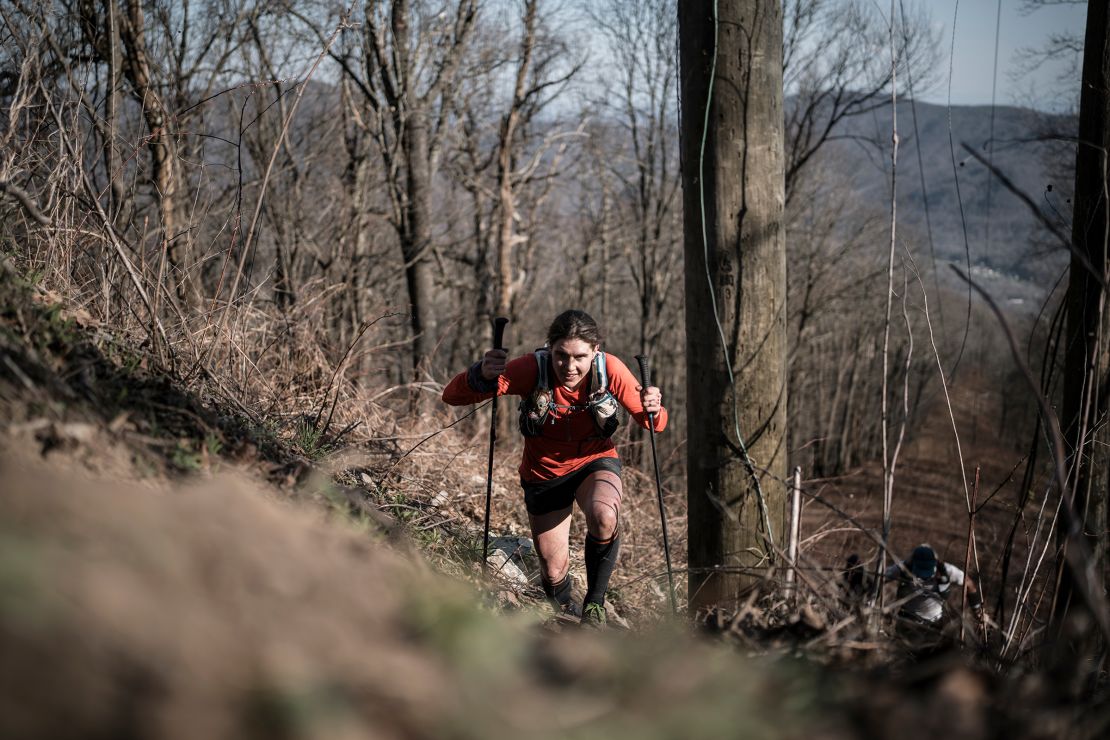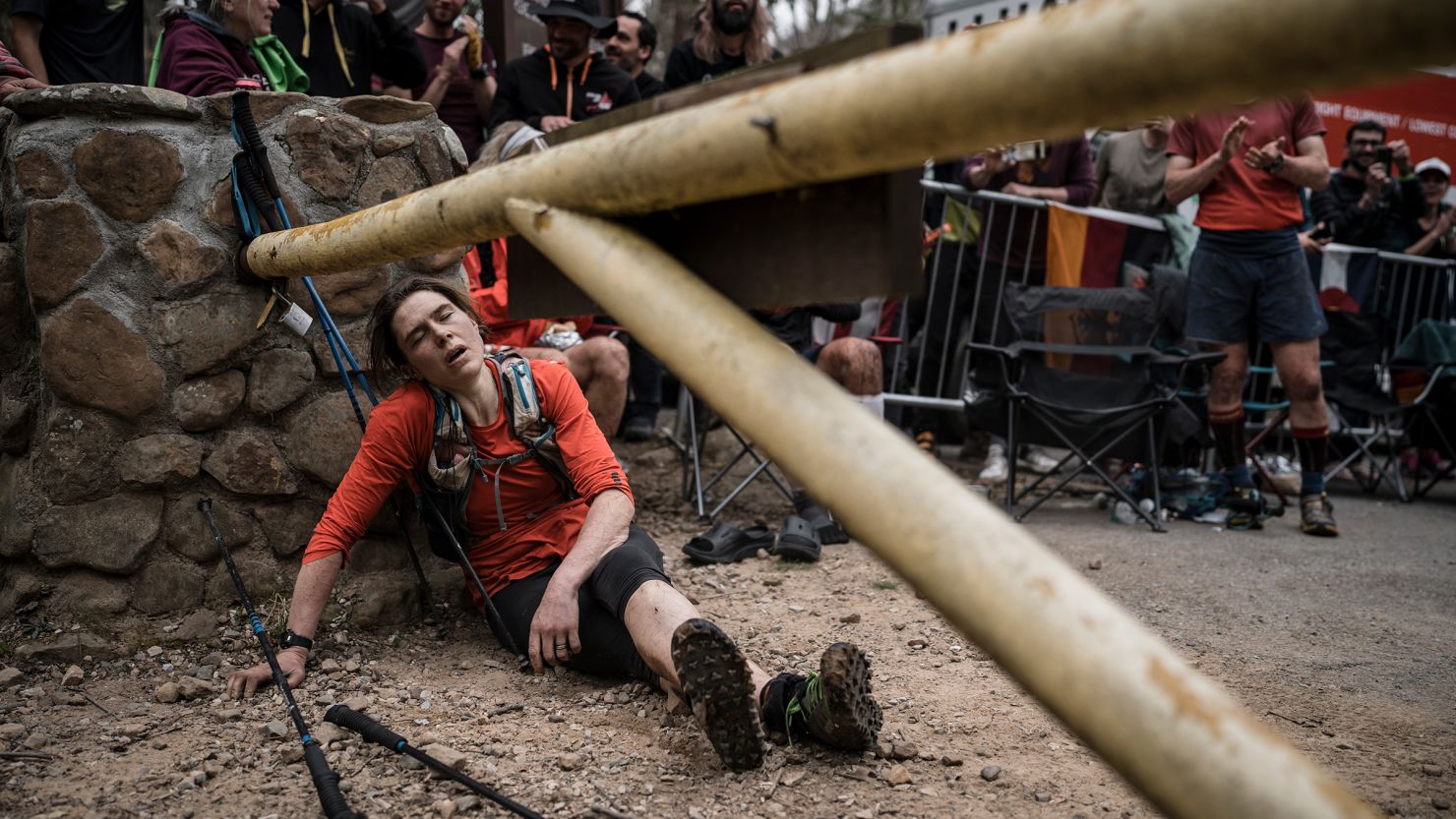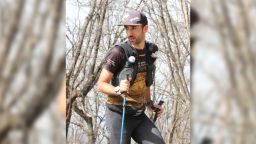Jasmin Paris, the first woman ever to finish the 100-plus-mile Barkley Marathons, has a lengthy injury list: tendonitis in one knee, swelling in her feet, and a series of itchy cuts criss-crossed over her arms and legs, now starting to scab over.
“And, obviously, blisters and the toenails are going to come off,” Paris adds, as if that’s a prerequisite for completing one of the most demanding footraces in the world.
All in all, though, the British ultrarunner feels in good shape, a pleasant surprise given what she put her body through several days earlier.
The Barkley Marathons, held annually in Tennessee’s Frozen Head State Park, is notorious within the distance running community, as famous for its punishing terrain and brutal climbs as it is for its quirky course markings and secretive entry system.
Before this year, only 17 men – and no women – had ever completed all five loops of the race, which covers somewhere between 100 and 130 miles and takes in 63,000 feet of elevation – more than twice the height of Mount Everest.
But Paris has redefined what many thought was possible in the Barkley Marathons – even race organizer Gary Cantrell, who previously declared that his fiendish creation is “too hard for women.”
Comments like that only fueled Paris as she prepared to compete this year.
“I’ve never really considered myself any different from a man in terms of what I can achieve,” she tells CNN Sport.
“I’m really delighted about the thing of a woman having finished it, but really, I wanted to prove to myself that I could do it … And I’ve never felt that being a woman was a barrier to that.”

Paris, competing in her third Barkley Marathons this year, finished her final loop in dramatic fashion, reaching the unassuming yellow gate that marks the start and finish of the race in 59 hours, 58 minutes, and 21 seconds – just 99 seconds inside the 60-hour cutoff time.
She faced a desperate sprint in the closing stages before bending her exhausted body over the arm of the gate and crumpling to the floor in a heap, a picture of utter fatigue and faded energy.
“All I could do was breathe and that’s all my body was screaming out for: lie down and breathe,” Paris says about finishing the race.
“That final kilometer was the first point, I think, where I actually started to doubt that I was going to make it. I did believe in myself until that point and then suddenly I was like, ‘It’s going to be really down to the wire.’
“I felt like I couldn’t go any faster and yet somehow managed to pull it out of the bag and somehow did push myself almost into a sprint on that final bit of hill when everything in me was so desperate to stop.”
In the end, it was the thought of having to run all five loops again that helped Paris to drag herself over the finish line in time.
“To be in that position again next year was just so overwhelming,” she says. “It was like being hit by a bus, that thought that you would have to do it all over again.”
To attempt the Barkley Marathons once – let alone three times, in Paris’ case – can be a nightmare-inducing experience for even the most experienced ultrarunners, accustomed to covering much further than the 26.2 miles of a marathon in the world’s harshest environments.
No race in the world is quite like Barkley, which forces runners to navigate through woods and briars without the support of phones, GPS trackers or regular course markings.
Instead, participants are given a route map to copy down before the start of the race and are tasked with collecting a page from a series of paperback books as they make their way around the course.
The event runs continuously over a 60-hour period, forcing runners to navigate through dense woodland at night and catch up on sleep when they can. Paris, for instance, only managed to close her eyes for three minutes between the fourth and fifth loops, and otherwise had to stave off hallucinations.
“I had various animals … I saw some lions, I saw owls, I saw pigs – there are pigs in the park, but these weren’t those sorts of pigs, they were different – (I saw) a big kind of mountain dog,” she explains.
“Then I saw these people wearing black raincoats going up the ridge above me in an area that was completely off trail, which was very odd. You’re not allowed to be there in the park, and I was very confused why they were there; they were a bit sinister and kind of foreboding.”
This could be your fate if you’re lucky – or unlucky – enough to gain one of the 40 or so entry spots at the Barkley Marathons. Applicants must write a cover letter to Cantrell outlining why they want to take part and, if accepted, pay the $1.60 entrance fee. If it’s their first time, they must bring a license plate from their home state or country.
On race day, the event could start any time between midnight and noon. Cantrell – better known as “Lazarus Lake” or simply “Laz” – blows a conch to signify an hour until the start, then lights a cigarette to get proceedings underway.
The world's hardest ultramarathon
This unique combination of factors makes the Barkley such a challenging prospect, and this year, thanks partly to good weather conditions, a record five people completed all five of the 20-odd-mile loops.
Paris’ finish has garnered the most attention from those who follow the race online; a Change.org petition to earn her a nomination for the BBC Sports Personality of the Year has acquired more than 8,000 signatures.
“In this time of uncertainty, conflict between nations and pressure on the planet, Jasmin’s finish is a reminder that we can achieve great things as individuals and as a civilization,” is how American ultrarunner Harvey Lewis, who was competing in his third Barkley this year, summarized the feat to CNN Sport.
“Her finish marks the highest achievement – having run the equivalent of up and down Everest twice, through thorns and off trail nonetheless, to find the way, to push to the outer precipice of human achievement.”
To conquer the Barkley Marathons, Paris needed fuel. Pasta, rice pudding, porridge, hot cross buns, cheese and pickle sandwiches, chocolate bars, trail mix, Coca-Cola, and bananas – “my race superfood is the banana,” she says – were all consumed in quantity, but she adds that her nutrition strategy “sort of fell apart” after the second loop.
Instead, it was weeks of training that laid the foundation for Paris’ Barkley success. For her longest prep session, she went to bed at 8 p.m., woke up at midnight, and ran up the same hill 17 times over eight and a half hours. In that time, she was treated to snow, sleet and rain with only her dog for company.
“I did listen to music on that session because it felt so bonkers,” says Paris.
With two young children and a full-time job – she works as a small animal vet in Scotland – Paris usually has to fit in runs and strength classes between 5:30 and 7:30 a.m. each morning, while evenings are taken up with childcare and paperwork.
“I’ve never needed that much sleep,” she says.
Paris doubts that she will ever run the Barkley again, partly because the drive won’t be the same having finished the race before, and partly because she’s conscious of how flying across the Atlantic for a race impacts her carbon footprint.
A co-founder of The Green Runners, a group dedicated to making the running community more climate-conscious, she says that she prefers to travel to races by land and sea. Last year, that meant taking the train to Austria for the mountain and trail running championships.
“I’ve just reduced the amount of races I travel to full stop,” says Paris, “and that’s all for environmental reasons. We know that travel is a huge component of the carbon footprint of running and racing.”
Regardless of whether she returns, the Barkley Marathons is an event that Paris will always hold dear. It has challenged her in a way that no other race has done, and the camaraderie between the competitors is unique in the ultrarunning world.
“It’s going back to the basics of survival,” says Paris. “You are putting people at the very edge of what they’re capable of doing, and somehow, you’re exposing who they really are.
“It sounds really corny, but it’s true that you definitely feel afterwards that you have more in common with the people that you’ve done something like this with than you have with people you might have sat in an office with for 20 years.”
This perhaps explains why “the race that eats its young” – as the Barkley Marathons has been called – continues to fascinate: superhuman endurance always seems to go hand-in-hand with a spirit essentially human in nature.















